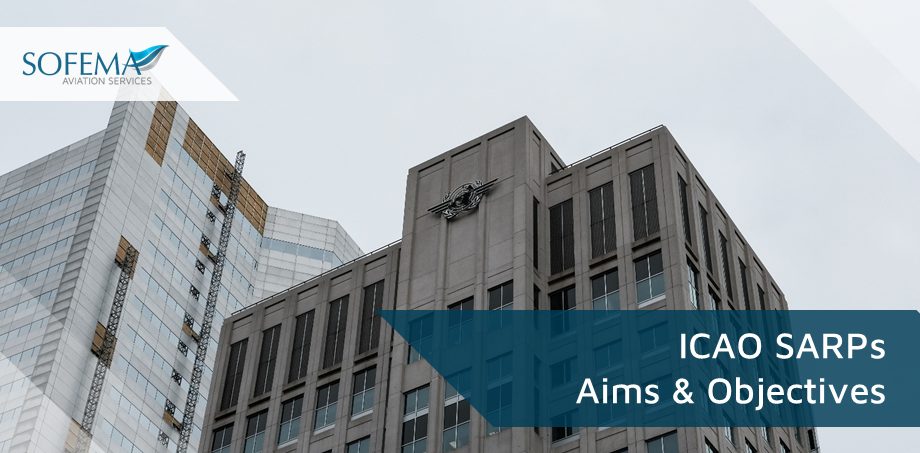Sofema Aviation Services (SAS) www.sassofia.com looks at the practical functioning of ICAO and its International Standards and Recommended Practices (ISARPs)
Introduction
The International Civil Aviation Organization (ICAO) develops and publishes International Standards and Recommended Practices (ISARPs) to ensure safe, secure, efficient, and environmentally sustainable international civil aviation operations. These ISARPs cover various aspects of aviation, including flight operations, air navigation services, aircraft operations, aerodromes, and more.
Annex 1 – Personnel Licensing: Standards regarding the licensing of flight crews, air traffic controllers, and aircraft maintenance personnel.
Annex 2 – Rules of the Air: Basic rules of the air, including visual flight rules and instrument flight rules.
Annex 3 – Meteorological Service for International Air Navigation: Meteorological service provision to support aviation.
Annex 4 – Aeronautical Charts: Standards for the content and format of aeronautical charts.
Annex 5 – Units of Measurement to be Used in Air and Ground Operations: Standards for the units of measurement used in international aviation.
Annex 6 – Operation of Aircraft: Standards and recommended practices for the safe operation of aircraft, including operational procedures and equipment.
Annex 7 – Aircraft Nationality and Registration Marks: Standards for the display of aircraft registration and nationality.
Annex 8 – Airworthiness of Aircraft: Standards for the airworthiness of aircraft.
Annex 9 – Facilitation: Measures to facilitate the smooth transport of passengers and cargo by reducing administrative barriers.
Annex 10 – Aeronautical Telecommunications: Standards for aviation communication systems.
Annex 11 – Air Traffic Services: Standards for the provision of air traffic control, flight information service, and alerting service.
Annex 12 – Search and Rescue: International standards for search and rescue, including the establishment of rescue coordination centres.
Annex 13 – Aircraft Accident and Incident Investigation: Standards for the investigation of aircraft accidents and incidents.
Annex 14 – Aerodromes: Standards for the design and operations of aerodromes.
Annex 15 – Aeronautical Information Services: Standards for the provision of aeronautical information necessary for the safety, regularity, and efficiency of air navigation.
Annex 16 – Environmental Protection: Standards to control and limit the environmental impact of aviation, including aircraft noise and emissions.
Annex 17 – Security: Safeguarding International Civil Aviation Against Acts of Unlawful Interference: Standards for aviation security.
Annex 18 – The Safe Transport of Dangerous Goods by Air: Standards for the transport of dangerous goods by air.
Annex 19 – Safety Management: Standards for the implementation of State Safety Programs (SSPs) and Safety Management Systems (SMSs)
The aims and objectives of ICAO SARPs can be summarized as follows:
- Safety: The primary objective of ICAO SARPs is to enhance aviation safety. They establish standardized procedures, practices, and requirements that promote safe operations throughout the global aviation community.
o These SARPs cover areas such as aircraft design and certification, pilot training and licensing, air traffic management, and accident investigation.
- Efficiency: ICAO SARPs aim to optimize the efficiency of air transport operations. They provide guidance on best practices for air traffic management, airspace utilization, aircraft operations, and infrastructure planning.
o By promoting efficiency, these SARPs help reduce delays, minimize fuel consumption, and enhance the overall effectiveness of air transportation.
- Security: Ensuring the security of international civil aviation is a crucial objective of ICAO SARPs. They define measures and procedures to prevent acts of unlawful interference, such as terrorism, sabotage, and other malicious activities.
o These SARPs cover areas such as airport security, cargo and baggage screening, passenger identification, and the protection of critical aviation infrastructure.
- Environmental Protection: ICAO SARPs also address environmental considerations in aviation operations. They aim to minimize the impact of aviation on the environment by promoting sustainable practices.
o These SARPs cover areas such as noise reduction, fuel efficiency, emissions standards, and the development of alternative fuels. The objective is to achieve a balance between aviation’s socio-economic benefits and its environmental footprint.
- Harmonization: Another important aim of ICAO SARPs is to promote global harmonization in aviation regulations and practices.
o They provide a framework for member states to align their national regulations with international standards, ensuring a consistent and interoperable aviation system worldwide. This harmonization facilitates seamless operations, improves safety oversight, and promotes mutual recognition of certifications and licenses.
Next Steps
Follow this link to our Library to find & Download related documents for Free.
Please see www.sassofia.com or email team@sassofia.com for further details regarding ICAO – EASA – FAA Training please see the following Introduction to Aviation Regulatory Structure – ICAO – EASA – FAA – 2 Days
Tags:
Aerodromes, Aeronautical Information Services, Aeronautical Telecommunications, Air Navigation Services, Air Traffic Controllers, Air Traffic Services, Aircraft Accident, aircraft maintenance personnel, Aircraft Nationality, Aircraft Operations, Airworthiness of Aircraft, Dangerous Goods, Environmental Protection, Flight Operations, Ground Operations, ICAO International Standards, Incident Investigation, International Air Navigation, Recommended Practices (ISARPs), Safety Management Systems (SMSs), SAS blogs, State Safety Programs (SSPs)




